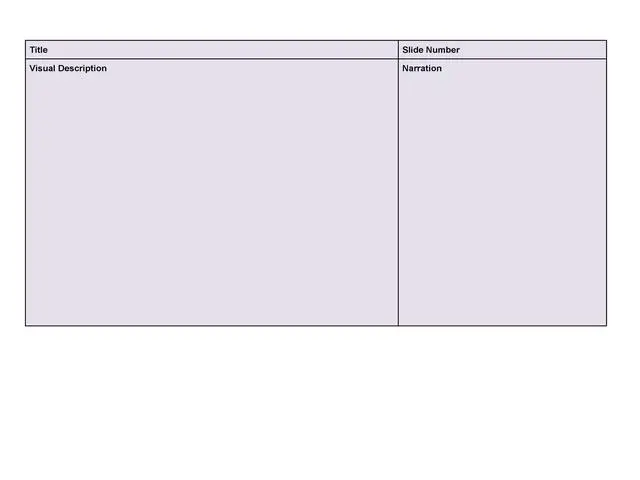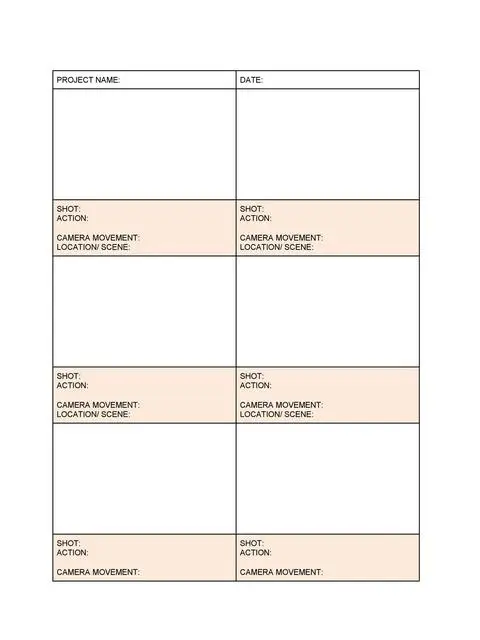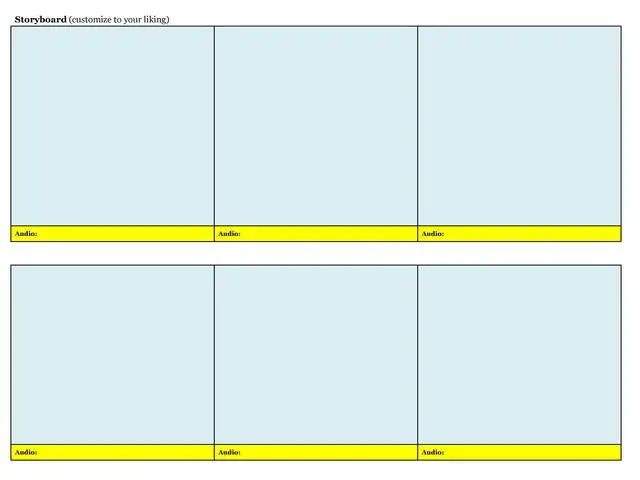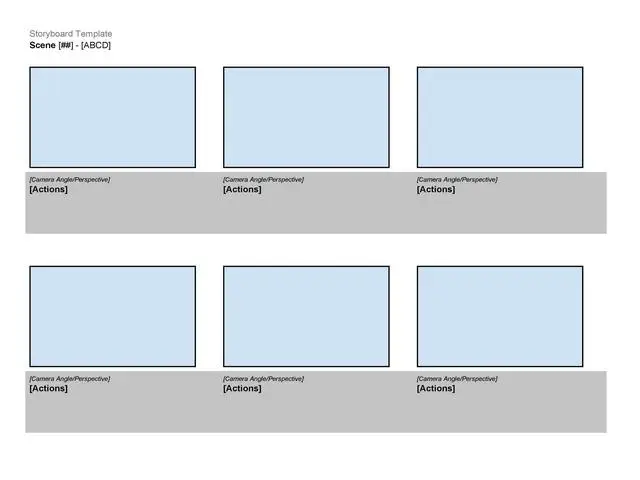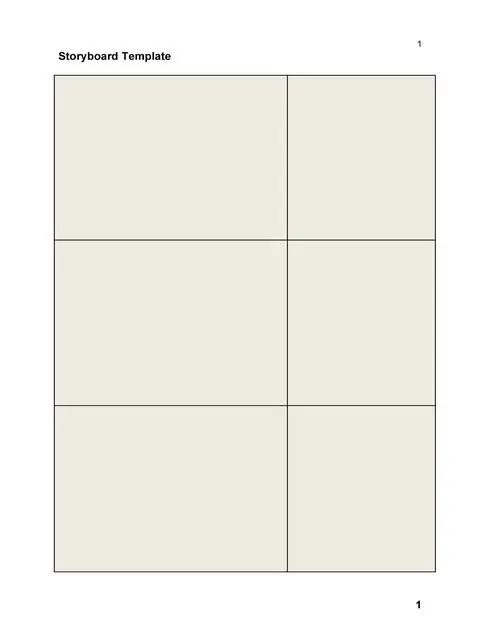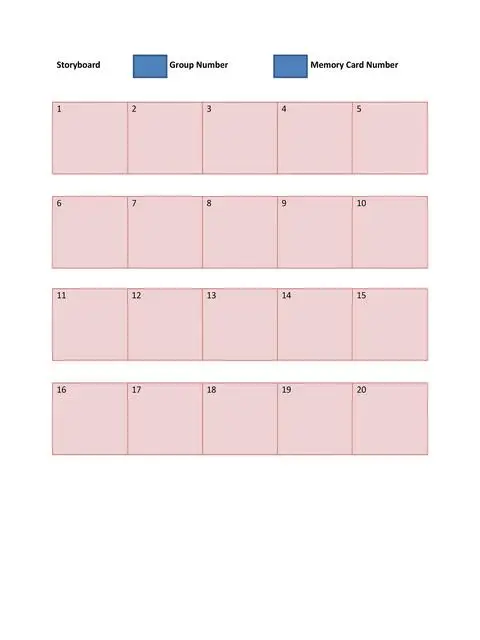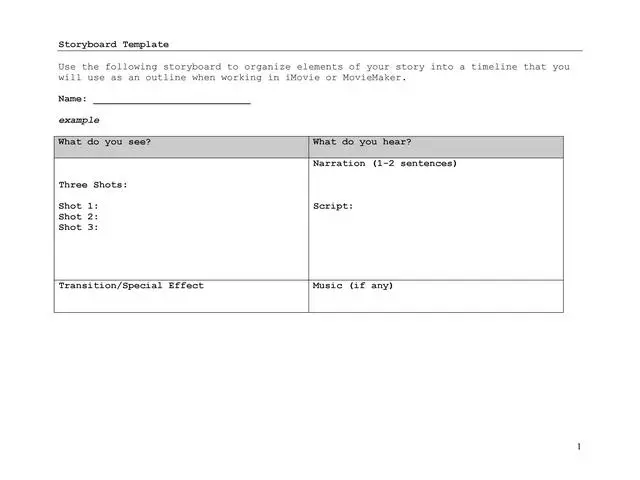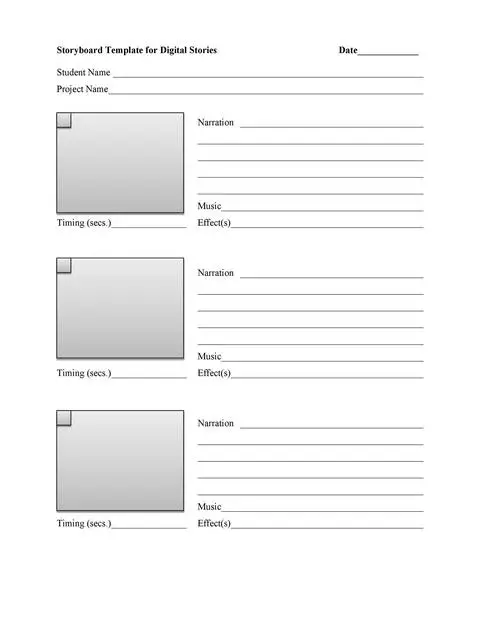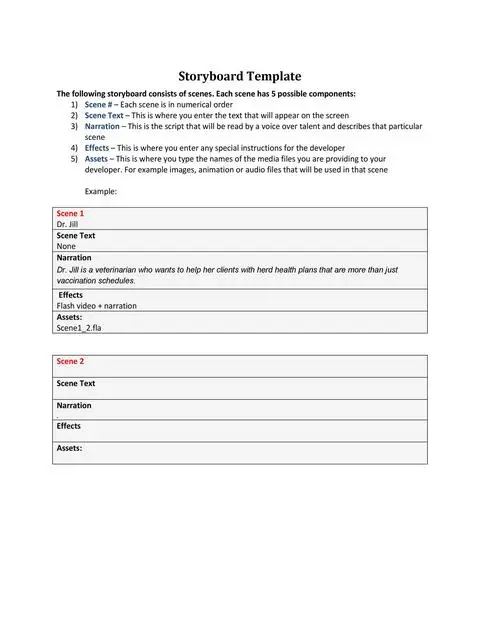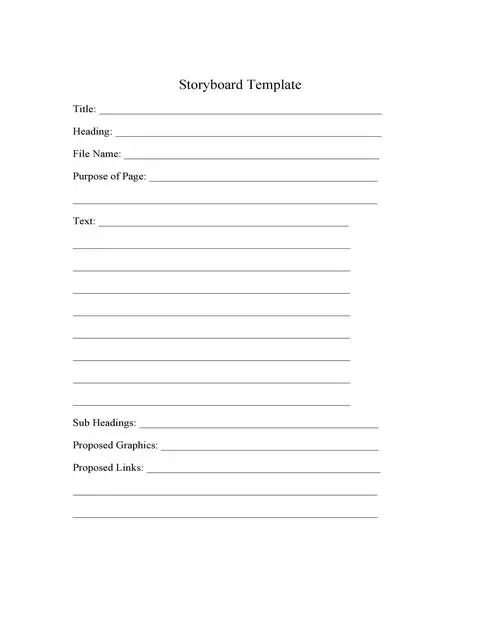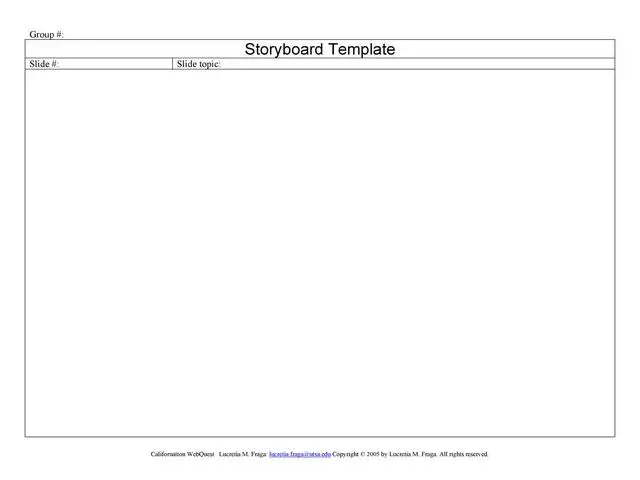Storyboard template is a document that shows the layout of your animated film. Here’s how to make a storyboard for animation. Planning on how to make a storyboard template for animation can be overwhelming. But with the right tools, you can create an effective and memorable animation quickly and easily.
A storyboard usually contains several thumbnail pictures that illustrate the progression of your film. Each picture also has a handful of explanatory text to help a viewer make sense of what the storyboard is conveying. To create one, you can either use storyboard templates or hand-drawn storyboard template.
Storyboard Template
How to Make Storyboard Template For Your Film?
Before creating storyboards, you need to plan on the sequence of events. Begin by planning on the beginning, the middle, and the end of each scene. Then, arrange all your film footage in the scene so that it appears as though it goes in a smooth and continuous motion.
You can draw storyboard images with the aid of storyboard programs. These programs enable you to add depth and dimension to your storyboards by automatically arranging and placing graphics and footage.
A key to drawing great storyboards is having clear understanding about how you want the animated sequence to look. It is important that you visualize the desired results before actually putting them into place. Plan your shots first before deciding on the positions and angles of your animation elements. This will give you a better understanding of how the entire scene should look like. Also, you may want to try out different angles and camera positions until you find one that works well.
After planning the sequence of events in your storyboard, write the script on the top line. To ensure that your script adheres to the dimensions of your scene, use bullets rather than spaces or periods. Bulletins are easier to read and understand than words. Once you’ve written down the script, use a storyboard programme to add special effects, animated objects, and backgrounds. You’ll find that the more you adjust the settings of the programme, the easier it becomes to create the right look for your storyboards.
Storyboard Template Word
When working on storyboards that need to be animated, always refer to standard aspect ratios. The aspect ratio is the ratio used to calculate the width and height of every frame of an animation. For instance, a movie shot that has a long scene and a narrow horizon will usually have a long aspect ratio, whereas a shot that has a very narrow horizon but a long scene will have a short aspect ratio.
In order to obtain a smooth aspect ratio, you must crop the scene and eliminate any long or near-long segments. It’s very important that your computer has a screen resolution that’s consistent throughout; having a high resolution for your computer screen can cause your images to appear blurred when viewed on a lower resolution monitor. If you want to take advantage of the highest quality animation possible, consider investing in a laptop with an external display.
Once you have your storyboards in place, you can begin adding the special effects and other elements that will help make your scenes come to life. You may decide to add in an entire score to the film based on your storyboard, which will give your final product a real sense of realism. Alternatively, you could experiment with camera movement.
A good way to add drama to a shot is to move the camera quickly across the screen. Creating quick camera movement requires a great deal of attention to detail and will often require the assistance of a professional. A digital SLR camera with a shutter speed that works to your needs will allow you to create very fast and crisp camera movement.
Storyboard Template Free
Storyboard Template PDF
When working on storyboards, remember that the finished product doesn’t always have to look like the way it first appeared. Storyboard artists are more than happy to work with you and give you feedback as you create your final film.
Working with a professional will provide you with years of experience and invaluable insight into how to make every scene on your film come to life.
You will be able to add every element that is important to your final storyboard, ensuring that your final movie is a unique, creative creation that people will want to see.


